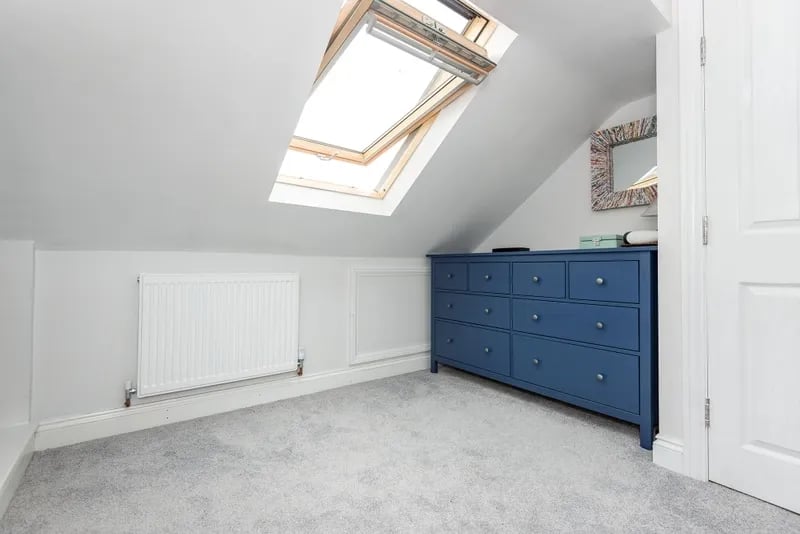Heating Options for Attic Conversions in London: Keeping Space Cozy

Transforming your attic into a usable, inviting space is exciting, but ensuring its year-round comfort requires careful planning, especially regarding heating. Here's an expanded guide to navigating the options and considerations for heating your loft conversion effectively:
Understanding the Essentials
- Why Heating Matters: Just like any other room, your loft needs proper heating to be truly comfortable and liveable. Improper heating can lead to discomfort, condensation, and even damage to the conversion.
- Plumbing & Heating Connection: Most loft conversions involve plumbing and heating works to integrate seamlessly with your existing systems.
Whether you are planning an attic conversion in London, the surrounding counties or elsewhere in the UK, here is some key information about heating your new room:
Extending Central Heating
Extending your existing central heating system is a popular way to heat your attic conversion, but it's not a one-size-fits-all solution. Here's a deeper dive into the considerations and potential alternatives:
Boiler Power Check: Before expanding, ensure your current boiler can handle the extra workload. An underpowered boiler leads to inefficiency, discomfort, and potential breakdowns. Consider:
- Current Heating Performance: Assess your household's heating demands throughout the year.
- Loft Size and Insulation: Larger lofts and poor insulation necessitate a more powerful boiler.
- Hot Water Needs: Adding a bathroom increases hot water demand significantly.
Upgrading Your Boiler: If necessary, consider these modern, efficient options:
- Combi Boilers: Compact and tankless, they provide instant hot water and heating without needing a storage tank. Perfect for space-saving and energy efficiency.
- System Boilers: Similar to combi boilers, but with a separate hot water cylinder for larger households with higher hot water usage.
The Tank Dilemma: London houses often have water storage tanks in the loft. Here's what to do if you worry a water tank might be in the way of your loft conversion:
- Assess Tank Location: If the tank's location hinders conversion plans, relocation or removal might be necessary.
- Tank Removal Advantages: Removing the tank allows for more loft space and opens up options for tankless boilers like combis.
- Tank Removal Considerations: Ensure enough cold water storage capacity and compatibility with your chosen boiler system.
Other Heating Options
If extending your central heating is not right for your loft conversion, there are alternative options that can be explored. Here are a few to consider:
Electric Radiators:
Electric radiators are a popular option that can easily heat a loft. To help you decide if electric radiators are the right fit for your loft, let's break down their advantages and disadvantages:
- Easy installation:No need for pipework, making them a DIY-friendly option for smaller projects.
- Individual room control: Each radiator can be controlled independently, offering flexibility and comfort in different areas.
- Cost-effective upfront: Generally less expensive to install than other options like underfloor heating.
- Wide range of styles and sizes: Available in various designs to match your aesthetic and heating needs.
- Higher running costs: Electricity can be more expensive than gas, leading to potentially higher energy bills.
- Can dry out the air: Electric heating doesn't generate moisture, so consider using humidifiers to maintain comfort.
- Less efficient than other options: Can lose heat through walls and floors, resulting in energy waste.
Underfloor Heating
Many of our customers decide to forego radiators altogether and instead opt for underfloor heating. While underfloor heating promises a luxurious warmth in your loft, it comes with considerations. Let's dive into the pros and cons:
Pros:
- Luxurious feel: Provides even heat distribution, creating a comfortable and radiant warmth from the floor up.
- Space-saving: Eliminates the need for radiators, freeing up wall space and maximising usable floor area.
- Energy-efficient: Modern systems can be very efficient, especially when paired with renewable energy sources like solar panels.
- Hygienic: Reduces dust circulation compared to radiators, potentially beneficial for allergy sufferers.
Cons:
- Complex installation: Requires professional expertise and can be disruptive during the installation process.
- Higher upfront cost: Generally more expensive to install than electric radiators due to the complexity of the system.
- Not suitable for all lofts: May not be compatible with certain floor structures or existing heating systems.
- Slower to heat up: Takes longer to reach desired temperatures compared to radiators.
Beyond the Basics:
- Smart Thermostats: Consider smart thermostats for remote control and optimised heating schedules.
- Zoning: If your loft space is large, installing a zoning system allows for independent temperature control in different areas.
- Radiant Heaters: These can be a good option for smaller, frequently used areas like bathrooms.
By weighing the pros and cons of each option and consulting with experienced loft conversion specialists, you can choose the best heating system for your unique needs and budget. Remember, the best choice depends on various factors, including the size and layout of your loft, your budget, and your desired level of comfort and efficiency.
Insulation
At Econoloft, we understand that a beautiful and functional loft conversion deserves to be comfortable and energy-efficient all year round. That's why high-quality insulation is part of every project we undertake, whether it's in London or anywhere else in the UK.
Why Insulation Matters:
Insulation forms a shield between your loft and the outside world. It is a vital part of your home's energy system, and provides a number of benefits.
- Minimising heat loss/gain: Just like a warm coat traps heat, insulation acts as a barrier, preventing precious warmth from escaping through your roof. In the summer, this works the other way, preventing excessive heat from coming through your roof, and keeping your loft cool. This keeps your loft comfortable year-round without excessive energy use.
- Reducing energy bills: By keeping the heat in, you'll use your heating system less, leading to lower energy bills and a lighter environmental footprint.
- Improving soundproofing: Insulation also acts as a sound barrier, muffling external noise and creating a peaceful sanctuary within your home.
- Increased property value: A well-insulated loft conversion adds value to your property, making it more attractive to potential buyers.
Econoloft's Insulation Expertise:
Our team of experts uses only the best insulation materials and installation techniques to ensure optimal performance:
- Material selection: We use high-performance insulation materials with excellent thermal resistance values, ensuring maximum heat retention.
- Expert installation: Our skilled technicians meticulously install the insulation, ensuring no gaps or air leaks that could compromise its effectiveness.
- Compliance with regulations: We adhere to all relevant building regulations and industry standards, guaranteeing the safety and quality of your loft conversion.
Remember that Econoloft use include energy-efficient windows and Velux rooflights in all our loft conversions, to bring even more light and warmth into your attic. By carefully considering your options, working with professionals, and prioritising insulation and energy efficiency, you can create a warm and comfortable haven in your newly converted loft, adding true value and enjoyment to your home. Explore our Gallery to see what we can do to make your loft conversion dreams a reality.


